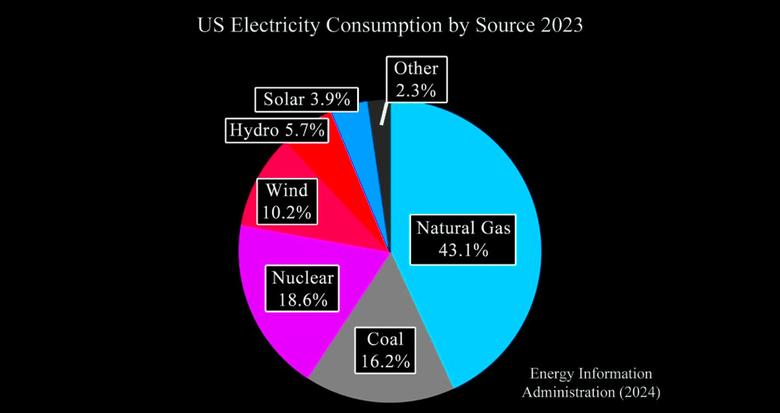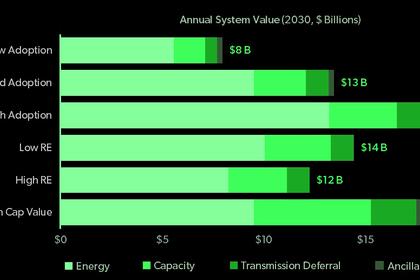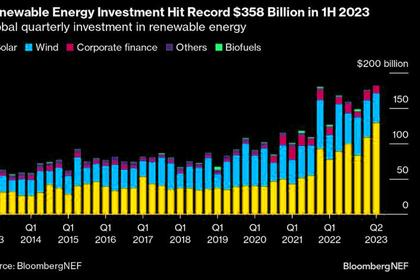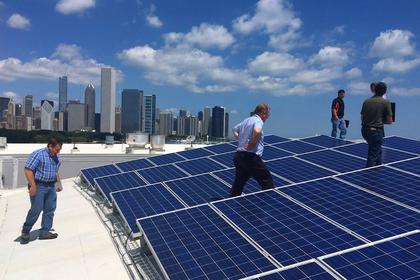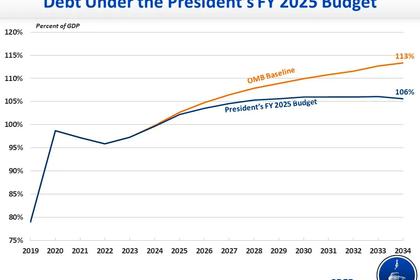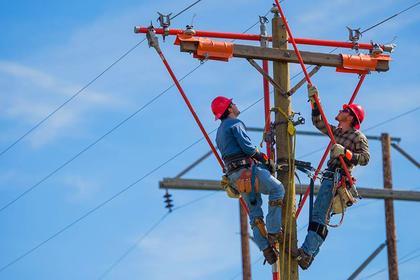ENERGYCENTRAL - May 2, 2024 - People in developed nations take abundant electricity for granted. When asked where electricity comes from, most will point to their wall outlet. But many states in the US are headed for a serious and prolonged shortage of electrical power not seen in decades, driven by rising demand from the artificial intelligence revolution and mandates to adopt green energy.
For 20 years, US electrical power policy has been dominated by efforts to try to “mitigate” global warming, believed to be caused by human greenhouse gas emissions. In 2021, President Joe Biden called for achieving a 100% carbon-free electric sector by 2035. Twenty-three states have enacted statues or issued executive orders to achieve Net Zero electricity generation by 2050.
Because of Net Zero mandates, US grid operators spent the last two decades replacing coal-fired power plants with natural gas plants, wind turbines, and solar installations. More than 200 coal plants have been closed, reducing electricity output from coal by almost 60% since 2007. From 2000 to 2023, wind and solar output rose from near zero to a combined 14.1% of US production. Over the same period, natural gas rose from 16.2% to 43.1% of power generation.
These efforts to transition from coal to wind and solar have been possible because US demand for electricity was almost flat from 2007 to 2023 at about 4.1 million gigawatt-hours. But grid operators in many states now face an unprecedented ramp in electricity demand.
The forced transition to green energy drives three new sources of power demand. First, 22 states now have zero-emissions vehicle mandates, which intend to ban the sale of cars with internal combustion engines by 2035, or a similar target date. In March, the Environmental Protection Agency finalized regulations that attempt to force about 40% of new light vehicles sold by 2030 to be electric. California and the EPA have also recently enacted regulations to force the heavy trucking industry to transition to electric trucks. To the extent that electric vehicles (EVs) are adopted, this will require the grid to deliver large amounts of additional power.
Second, cities and counties in seven states have banned gas appliances in new housing construction, such as New York City. In a 2022 study, the New England ISO concluded that a shift from gas appliances to electric appliances in New England would require more new electricity than a shift to EVs.
Third, the US federal government proposes to establish a new green hydrogen fuel industry. Seven billion dollars have been earmarked for “regional hydrogen hubs” to try to stimulate hydrogen production. Green hydrogen is produced by electrolysis of water and uses large amounts of electricity. To produce a single kilogram of hydrogen from electrolysis requires 50 to 55 kilowatt-hours of electricity, which is about double the daily electricity used by a typical US home. Plans call for billions of kilograms of green hydrogen to be produced.
But the electricity needed for the new artificial intelligence (AI) revolution will be greater than that needed for EVs, electric appliances, and green hydrogen combined. Amazon, Alphabet, Meta, Microsoft, and dozens of other firms are building massive new multi-acre data centers. In addition to new facilities, servers in the nation’s 2,700 data centers are being upgraded with new high-performance processing cards, boosting data center power consumption by six to ten times. Today, data centers use about 4% of US electricity, but the AI revolution is expected to boost that demand to more than 20% of US electricity consumption within the next ten years. Cryptocurrency generation, such as Bitcoin, also uses large amounts of electricity.
Rapidly rising power demand from the AI revolution and EVs, home appliances, and the proposed hydrogen fuel industry caught US grid operators unprepared. We are now entering a decade in which electricity demand will exceed what can be supplied by a large margin.
The New York State data center market is expected to grow by over 50% from 2023 to 2030. The demand for electricity in Virginia is projected to more than double by 2035, driven by data center growth. California, Georgia, Texas, and the Pacific Northwest project large increases in electrical power demand. Jason Shaw, chairman of the Georgia Public Service Commission, stated: “When you look at the numbers it is staggering … It makes you scratch your head and wonder how we ended up in this situation. How were the projections that far off? This has created a challenge like we have never seen before.”
The coming power shortage will produce two big economic impacts. First, electrical utilities will cease the premature shut down of coal, gas, and nuclear power plants. It will be impossible to construct enough new wind and solar generators to provide electricity to meet the new demand for AI data centers, let alone the needs of electric vehicles, electric home appliances, and hydrogen electrolyzers.
We already see efforts to extend the operating lives of power plants that were scheduled for closure. California’s Diablo Canyon nuclear plant, which was scheduled to close in 2025, has been extended to operate until 2030. The Palisades nuclear plant in Michigan has been idle since May of 2022, but has now received $1.5 billion from the federal government to restart operations. Coal-fired power plants located in many Midwest states will likely operate for decades to come.
The second economic impact will be rapidly rising electricity prices, driven by a growing disparity between power demand and supply. Higher prices will reduce the demand for heat pumps endorsed by the green energy movement, which will remain more expensive than natural gas and propane furnaces in cold regions. EVs will be more expensive to charge and public EV charging facilities will struggle to be profitable. Gasoline cars will hold cost advantages for decades to come.
The transition to electric heavy trucks will fail. Heavy truck charging requires vast amounts of power. The South El Monte truck charging site in California, the first of its kind, is designed to simultaneously charge up to 32 heavy trucks. But when fully loaded, this facility would use more electricity than consumed by a California city with a population of 200,000 residents, such as San Bernardino or Huntington Beach.
Efforts to establish a green hydrogen fuel industry, using electrolyzers, will produce only a tiny market. High electricity costs will make hydrogen from electrolysis too expensive to power chemicals, steel, and other heavy industries.
And the coming electricity shortage in the US is likely to be prolonged. US utilities have wasted much capital investment over the last few decades building intermittent wind and solar systems that don’t deliver much electricity. At the same time, the fleet of US nuclear power plants has been aging.
Today, 94 operating nuclear plants provide about 19 percent of US power. During the last two decades, ten nuclear plants have been retired, with only four new ones brought on-line. The other 90 plants began operating between 1970 and 1990.

Sixteen of these plants are 50 years or older and another 38 are between 40 and 50 years old. The good news is that the life of these plants can be extended for 60 years or more. But a decade from now, just as grid operators are making progress in closing the gap between power demand and supply, many of these nuclear plants will need to be refurbished or replaced.
The biggest impact will be on efforts to transition to a Net Zero electrical grid. The coming electrical power shortage will cripple these efforts. It will be impossible to serve both the artificial intelligence revolution and pursue a transition to wind and solar systems. The green energy transition will be sacrificed in favor of generating enough electrical power.
-----

